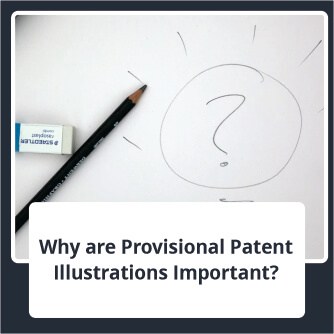If you’re still developing your invention, and plan on filing a provisional patent, then you should look at provisional patent illustrations. Some might feel that for a provisional application, illustrations are not that important. According to the USPTO, it isn’t mandatory to submit patent illustrations with a provisional application. But that can prove to be a mistake in the long run.
Patent illustrations immensely aid the description of your invention. Words alone cannot give a clear visual idea of your invention. They can be the difference makers while you write your patent application. Also, they serve as a strong foundation for you when you file a non-provisional patent application.
But what exactly is the need for provisional patent illustrations? Let’s find out.
Related Article: How does an illustrator add value to your patent application?
What is the value of Provisional Patent Illustrations?
Imagine you are (unknowingly) competing against another entity for securing patent rights for an invention. Let’s say that you file a provisional application before them. This doesn’t necessarily mean that you have won the race. You may face issues in case they file a non-provisional application before you. You can, of course, make your case by presenting the facts. But it will be more tedious for you to win the patent rights without any patent illustrations.
Hence, even if you’re filing a provisional application, it is very important to create provisional patent illustrations for it.
What are the requirements of Provisional Patent Illustrations?
On paper, you can even submit rough sketches of your invention. Since you are not finished with your invention, there are no mandatory guidelines that you should adhere to. However, if you are in the latter phase of your development, you should create proper provisional patent illustrations.
The Manual of Patent Examining Procedures lists out instructions that you need to adhere to:
- All illustrations must be in black and white unless a part of the invention needs colour to explain it.
- Always use India ink on all drawings.
- Ensuring that the drawing is to scale when the illustration is reduced to two-thirds the size is vital.
- Each drawing should include the invention name, name of the inventor, and application number.
- Submit all illustrations on a white A4 matte paper that is flexible and strong. Dimensions should be 21cm x 29.7cm or 21.6cm x 27.9 cm.
- Margins should be as follows:
- 2.5 cm on the top
- 2.5 cm on the left side
- 1.5 cm on the right side
- 1.0 cm on the bottom
- Superimposition of drawings should not happen.
- You may use symbols and legends if necessary to describe the invention.
- Avoid solid black shading except on bar graphs or to represent colour.
- Use lead lines to redirect the reader from the drawing to the associated symbol in the description.
Drawings aren’t restricted to illustrations and can also include charts and diagrams. The USPTO allows photos, but only for utility patents and design patents. Photographs must be in high definition to depict intricate details of the invention. They must follow the same rules in terms of the type, size, and margins of the drawing.
You don’t require any drawings for patents involving chemical compounds.
Related Article: Good Patent Illustrators vs Patent Drawing Software: Which one should you opt?
More Important Points to Consider
Despite all these rules, there are other considerations you should be aware of while creating US patent drawings. Some of these include:
- Numbering of Sheets: You must number the drawings in Arabic numerals, and write it on the top of the sheet. This can be either in the middle or on the right, but not in the margin. Numbering must also include two numerals separated by a line to show the page out of the total number of pages. Ensure that the numbers that you use to identify portions of the drawing are not larger than the numerals.
- Numbering of Views: You must number the views with consecutive Arabic numerals, and they must be independent of sheet numbering. Another key point is to use the same Arabic numerals for partial followed by a capital letter. You must not use brackets, circles, or inverted commas while writing the numbers and letters. These numbers must also be preceded by “FIG.” But this isn’t necessary if there is only 1 view.
- Holes: Ensure that you don’t make any holes anywhere in your drawings.
- Copyright/Mask Work Notices: You may place them in the drawing directly below the portion they pertain to, having a dimension of 1/8 inch x 1/4 inch.
- Corrections: You must ensure that the corrections you submit with the patent drawing must be permanent and durable.
- Security Markings: You may use them, but they must be in the centre of the top margin.
Need assistance with Provisional Patent Illustrations? – Professional Patent Illustrators
You may have a brilliant invention, deserving a patent. But by now you already know how important it is to hire the right professional. Professional Patent Illustrators boast 10+ years of experience in delivering top quality patent illustrations. We specialize in Utility patents and design patents, with thorough knowledge of the latest guidelines and norms. Our turnaround time is incredibly fast and we guarantee any number of iterations until we satisfy your needs. Check out our Sample Illustrations here.
Also, check out our Professional Patent Illustration servicesto avail us.


